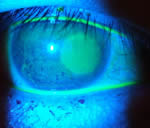

ACS Eye Specialist Centre
95G & 97G Jalan TKS 1,
Taman Kajang Sentral,
43000 Kajang,
Selangor, Malaysia.
Tel: 03-82116078
Waze or Google Map
Chemical Injuries
How does it happen?
These injuries can occur at home and at the work place. Sometimes pouring a chemical down a drain can result in a chemical splash into the eye. Cement particles can fly into the eye if one is working at a construction site and cause injuries. Pouring of liquids from container to container can also result in a chemical injury. Many homes have dozens of everyday products that can cause injury to the eye should they splash in.What is the first aid treatment for this?
Quick action can made the difference between permanent loss of sight and saving one’s sight. All injuries should be irrigated immediately on the spot. In industrial settings there may be special facilities to irrigate the eye. At home, tap water can be used. It is important to have someone help to hold the eye open so that the eye will be properly irrigated. Keep on irrigating copiously until the chemical is completely washed out from the eye. This should be carried out for at least 20 minutes.Is there a difference in severity of injury depending on the type of chemical involved?
The severity of the injury is related to whether the chemical is alkaline or acidic. Alkali chemicals are more destructive then acidic chemicals because of their ability to adhere to the eye and penetrate tissues. However, acid burns may be compounded by glass injuries caused by an explosion.Alkali- based chemicals include:
Acid-based chemicals:
Often, the difference between a serious but treatable injury and losing vision is a matter of understanding a few principles of ocular first aid.Do I need to see an eye doctor for chemical injuries?
Yes, it is important to seek treatment immediately after first aid treatment is performed. If possible, bring the chemical along so that the doctor will know what entered the eye. The doctor may need to continue the irrigation to ensure that the chemical has been removed as much as possible. The eye will be examined under high magnification to determent the extent of the injury and also to remove any embedded particles that may get trapped under the eyelids.The doctor will then prescribe the appropriate treatment for your condition.
How can I prevent chemical injuries from ocurring?
Prevention is most certainly better than cure when it comes to chemical injuries. Read and follow instructions carefully before using chemicals. Always wear safely goggles when handling chemicals. These are usually made out of polycarbonate and are shatter proof.What are the chances of recovering after a chemical injury?
The chance of regaining useful vision following a chemical accident is dependent on the nature and type of injury. However, knowing how to initiate appropriate first aid treatment on the spot greatly increases the odds of recovery and saving vision.